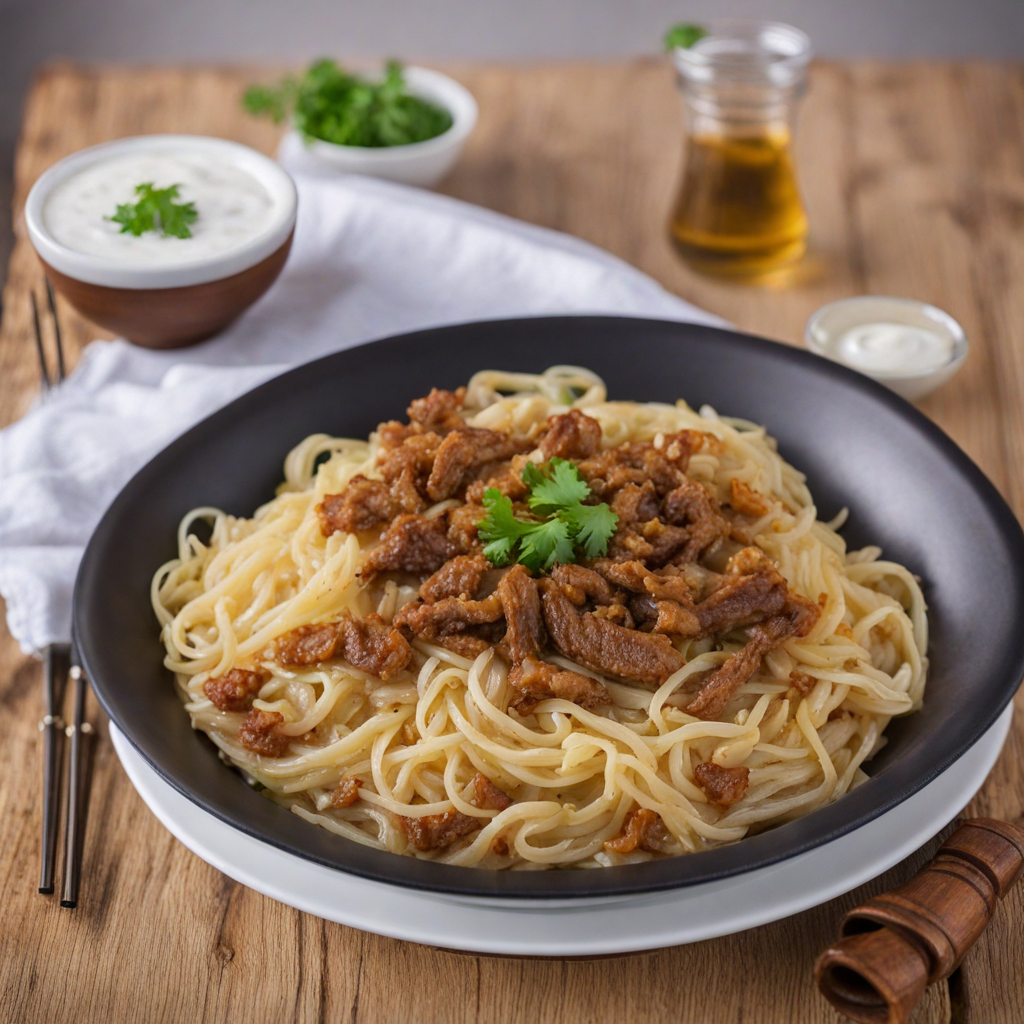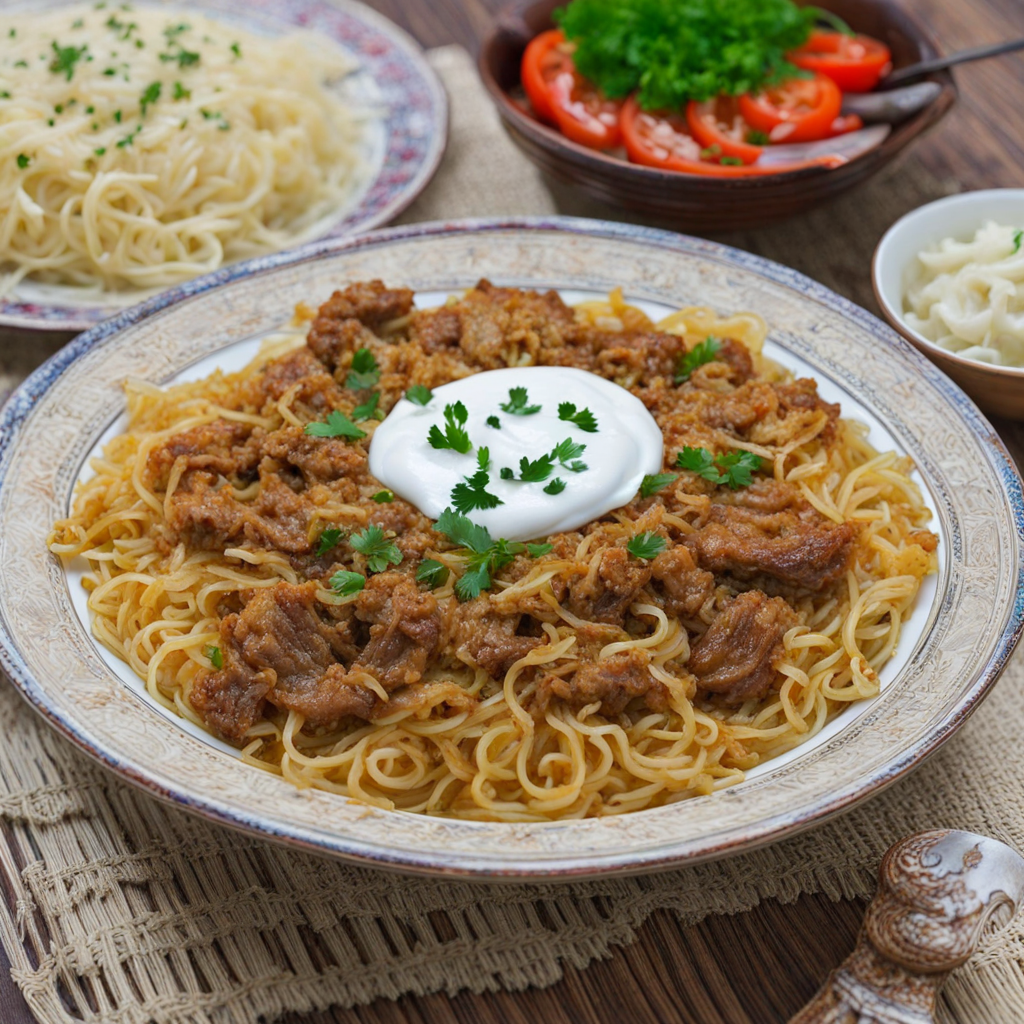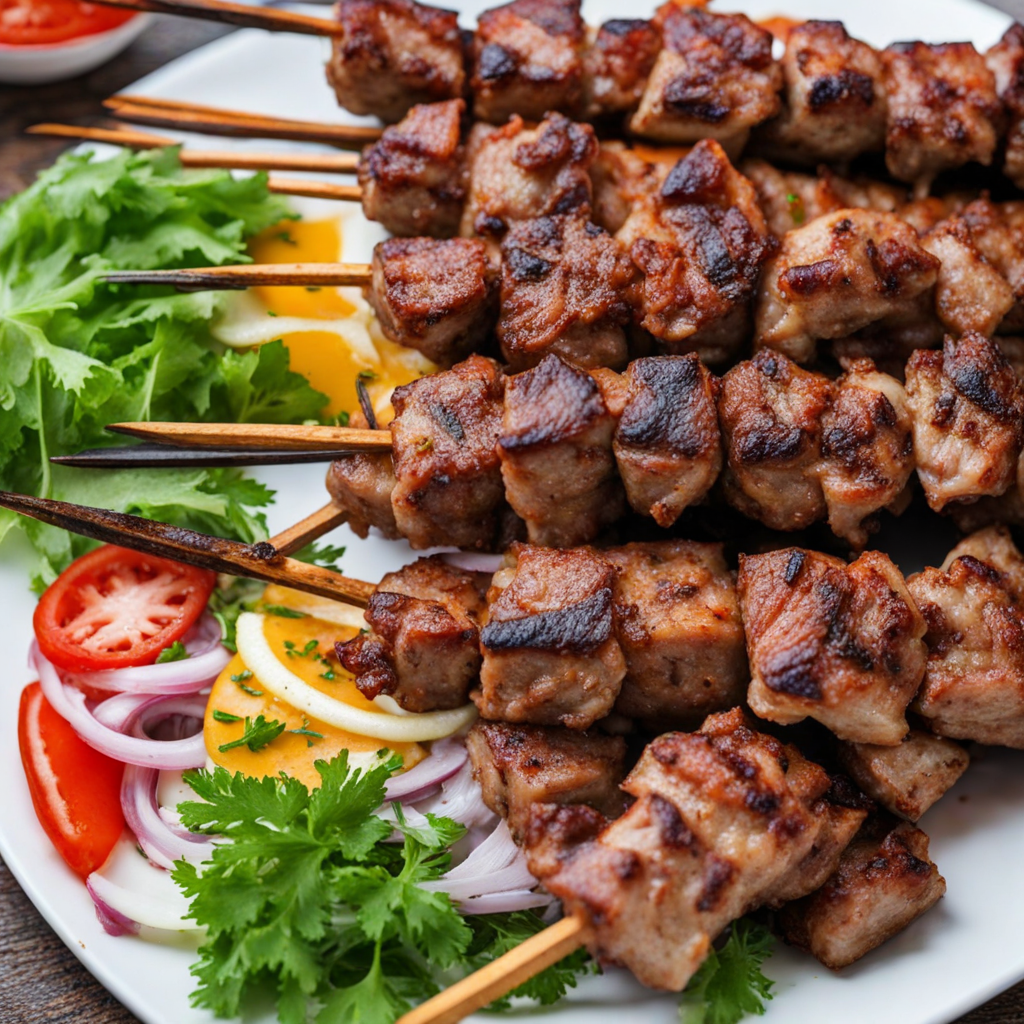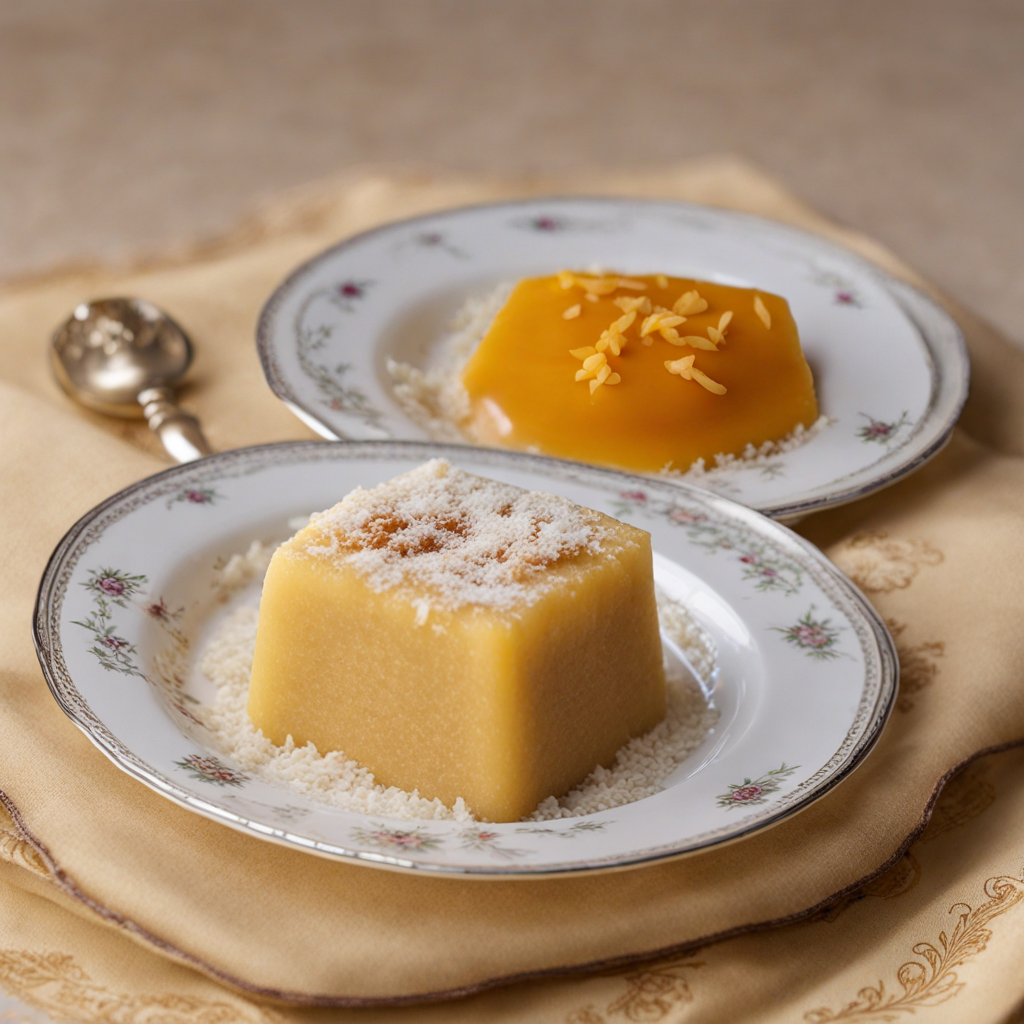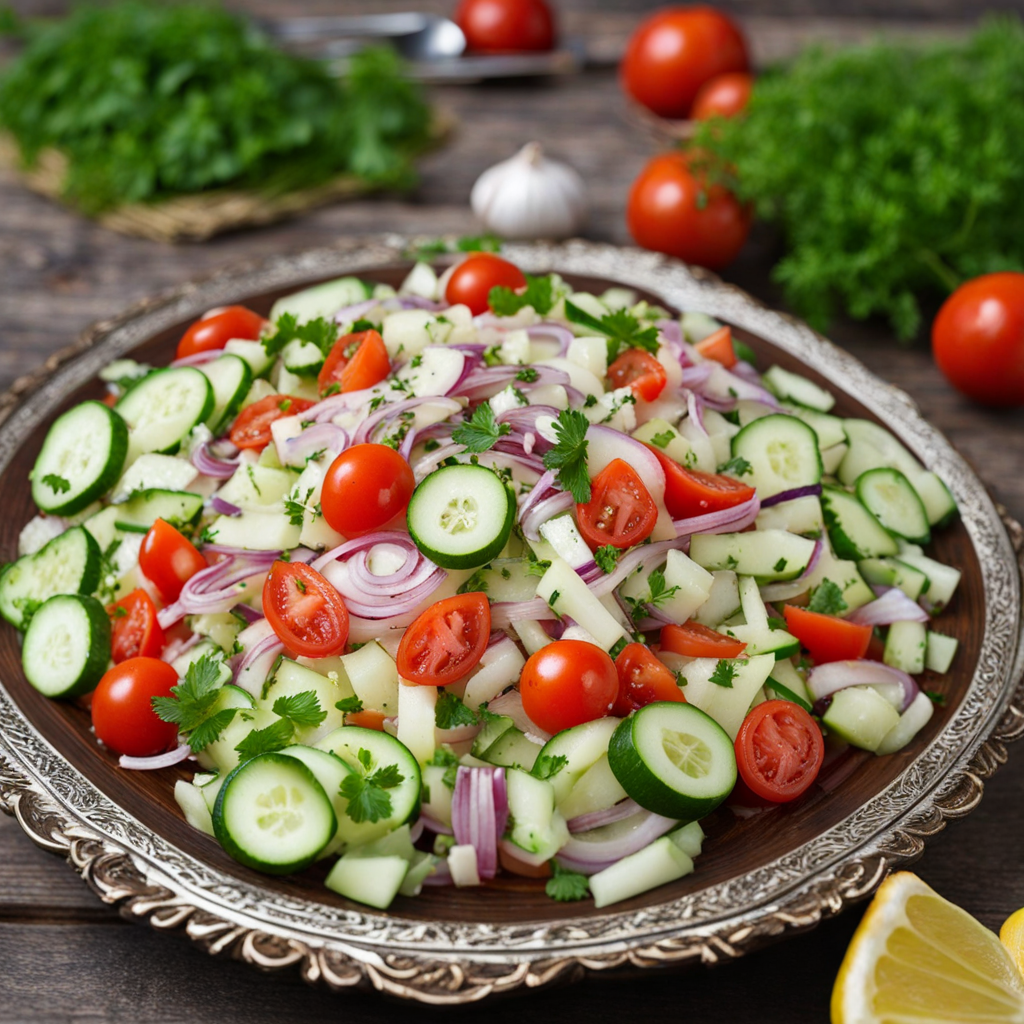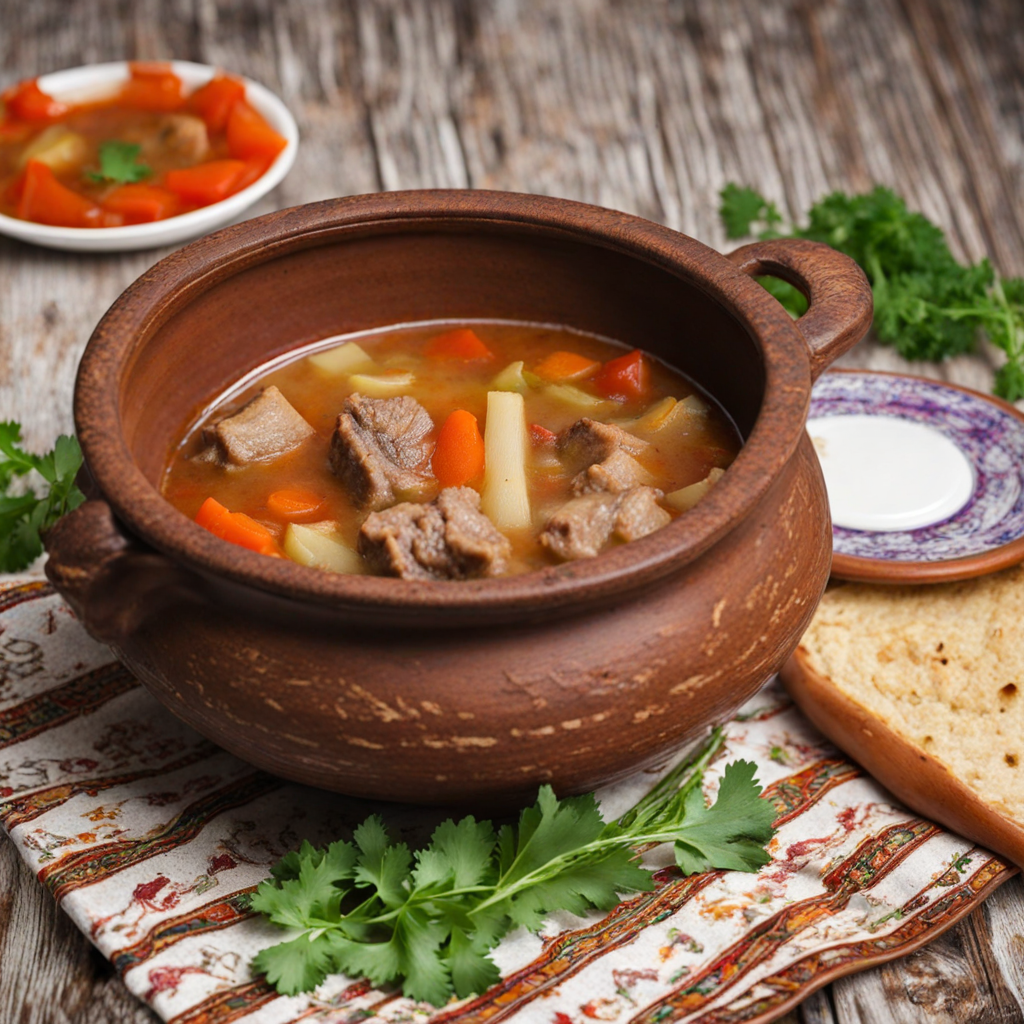Khingal
Khingal is a delightful Azerbaijani dish that showcases the rich culinary traditions of the region. At its core, Khingal consists of tender, hand-rolled pasta, which is typically made from a simple mixture of flour and water, sometimes enriched with eggs. The dough is rolled out thin, cut into squares, and filled with a savory mixture of minced meat, usually lamb or beef, seasoned with aromatic spices. The filled squares are then folded into triangles or pockets and boiled to perfection, creating a comforting and hearty dish that highlights the balance of flavors in Azerbaijani cuisine. The dish is often served with a generous drizzle of garlic-infused yogurt or a tangy tomato sauce, elevating the flavors and providing a refreshing contrast to the rich, meaty filling. The yogurt adds a creamy texture, while the garlic lends an aromatic punch, making every bite a harmonious blend of taste and sensation. Khingal is frequently accompanied by a sprinkle of fresh herbs, such as dill or cilantro, which not only enhances the visual appeal but also introduces a burst of freshness that complements the dish beautifully. Khingal is more than just a meal; it embodies the communal spirit of Azerbaijani dining. Traditionally enjoyed during family gatherings and celebrations, the process of making Khingal can be a social affair, bringing loved ones together in the kitchen to share stories and laughter. With its comforting flavors and inviting presentation, Khingal is an excellent choice for anyone looking to explore the diverse and delicious world of Azerbaijani cuisine, offering a unique taste experience that is both satisfying and memorable.
How It Became This Dish
The Culinary Journey of خینگال (Khingal): A Tapestry of Tradition and Taste in Azerbaijan #### Origins of Khingal Khingal, a beloved dish from Azerbaijan, embodies the rich culinary heritage of the region. At its core, khingal is a type of dumpling, characterized by its tender, doughy exterior and a savory filling that typically includes minced meat, often lamb or beef, along with aromatic spices. The origins of khingal can be traced back to the nomadic tribes of Central Asia, where the practice of making dumplings and stuffed pastries has existed for centuries. As these tribes settled and established communities, they began to incorporate local ingredients and cooking methods, leading to the evolution of khingal as we know it today. The word "khingal" is derived from the Persian language, reflecting the historical interactions between the peoples of the Caucasus and Persia. This linguistic connection highlights the cultural exchanges that have shaped Azerbaijani cuisine, making khingal not just a dish, but a symbol of cultural continuity and adaptation. #### Cultural Significance Khingal holds a special place in Azerbaijani culture, often being prepared for significant occasions such as weddings, celebrations, and family gatherings. The dish is traditionally made by hand, often involving the entire family in its preparation. This communal aspect of cooking khingal reinforces familial bonds and cultural identity, as recipes are passed down through generations, each family adding their unique twist or secret ingredient. In Azerbaijan, food is not merely sustenance; it is a medium through which stories and traditions are conveyed. Khingal represents hospitality and generosity, as it is often served to guests as a sign of respect and welcome. Its preparation can be an elaborate process, with families gathering to create large batches, reflecting the communal spirit of Azerbaijani culture. #### Ingredients and Preparation The preparation of khingal is a labor of love, requiring time and skill. The dough is made from simple ingredients: flour, water, and salt. However, the magic lies in the filling, which typically includes finely chopped meat mixed with onions, garlic, and a blend of spices such as coriander, cumin, and black pepper. Some variations may incorporate herbs like dill or parsley, adding freshness to the filling. To make khingal, the dough is rolled out thin and cut into squares or circles, each piece being filled with the meat mixture. The edges are then carefully sealed to create a pocket. The dumplings are boiled until they float, indicating they are cooked through. They are often served with a drizzle of melted butter or a side of yogurt, enhancing the flavors and adding a creamy texture. #### Khingal Across Regions While khingal is deeply rooted in Azerbaijani culture, its influence can be seen across the region, particularly in countries like Georgia, Turkey, and Iran. Each culture has adapted the dish to its local palate, leading to a variety of interpretations. For instance, in Georgia, a similar dish called khinkali is popular, featuring larger dumplings filled with seasoned meat and broth. In Turkey, you might encounter a version known as manti, which is often served with yogurt and garlic sauce. These variations demonstrate the interconnectedness of culinary traditions in the Caucasus and surrounding regions. Despite these regional adaptations, khingal has maintained its identity as a quintessential Azerbaijani dish. In recent years, efforts have been made to promote khingal and other traditional foods as part of Azerbaijan's national identity, especially in the context of globalization and the increasing popularity of Azerbaijani cuisine on the international stage. #### Modern Developments Over time, khingal has adapted to modern culinary trends while retaining its traditional roots. Restaurants across Azerbaijan have begun to feature khingal on their menus, often presenting it in new and innovative ways. Chefs experiment with different fillings, including vegetarian options, and incorporate modern plating techniques that elevate the dish's visual appeal. Moreover, the rise of food tourism in Azerbaijan has introduced khingal to a global audience. Culinary festivals and events celebrating Azerbaijani cuisine often showcase khingal, allowing visitors to experience the dish firsthand while learning about its cultural significance. This exposure has sparked interest in traditional cooking methods, with workshops and classes dedicated to teaching the art of making khingal. #### Khingal in Contemporary Azerbaijani Society Today, khingal remains a staple in Azerbaijani households, symbolizing comfort and nostalgia. For many, it evokes memories of family gatherings and celebrations. The dish has also become a source of pride for Azerbaijani people, representing their rich culinary heritage and the resilience of their culture. In the context of contemporary society, khingal also reflects broader themes of identity and globalization. While the dish is firmly rooted in tradition, its evolving nature allows it to adapt to changing tastes and lifestyles. The fusion of traditional recipes with modern culinary techniques demonstrates how food can bridge the past and the present, connecting generations while inviting new interpretations. #### Conclusion Khingal is more than just a dish; it is a testament to the cultural history and identity of Azerbaijan. Its origins, steeped in the traditions of nomadic tribes, have evolved into a cherished culinary practice that continues to bring families together. As khingal gains recognition beyond Azerbaijan's borders, it serves as a delicious reminder of the interconnectedness of cultures and the universal language of food. Today, khingal stands at the crossroads of tradition and modernity, embodying the spirit of Azerbaijani hospitality and the enduring power of culinary heritage. Whether enjoyed at a festive family gathering or in a modern restaurant setting, khingal remains a beloved symbol of Azerbaijan's rich history and vibrant culture, inviting all who taste it to partake in its story.
You may like
Discover local flavors from Azerbaijan


